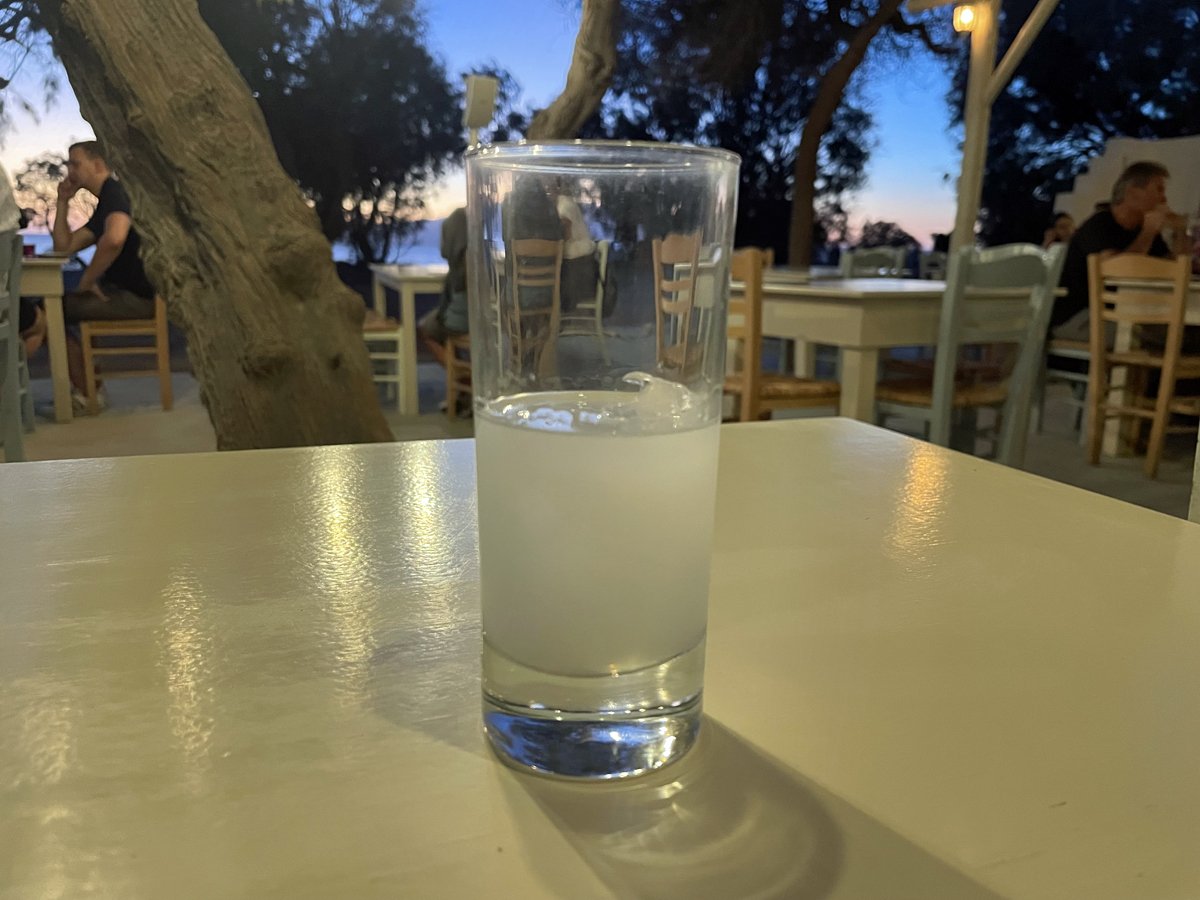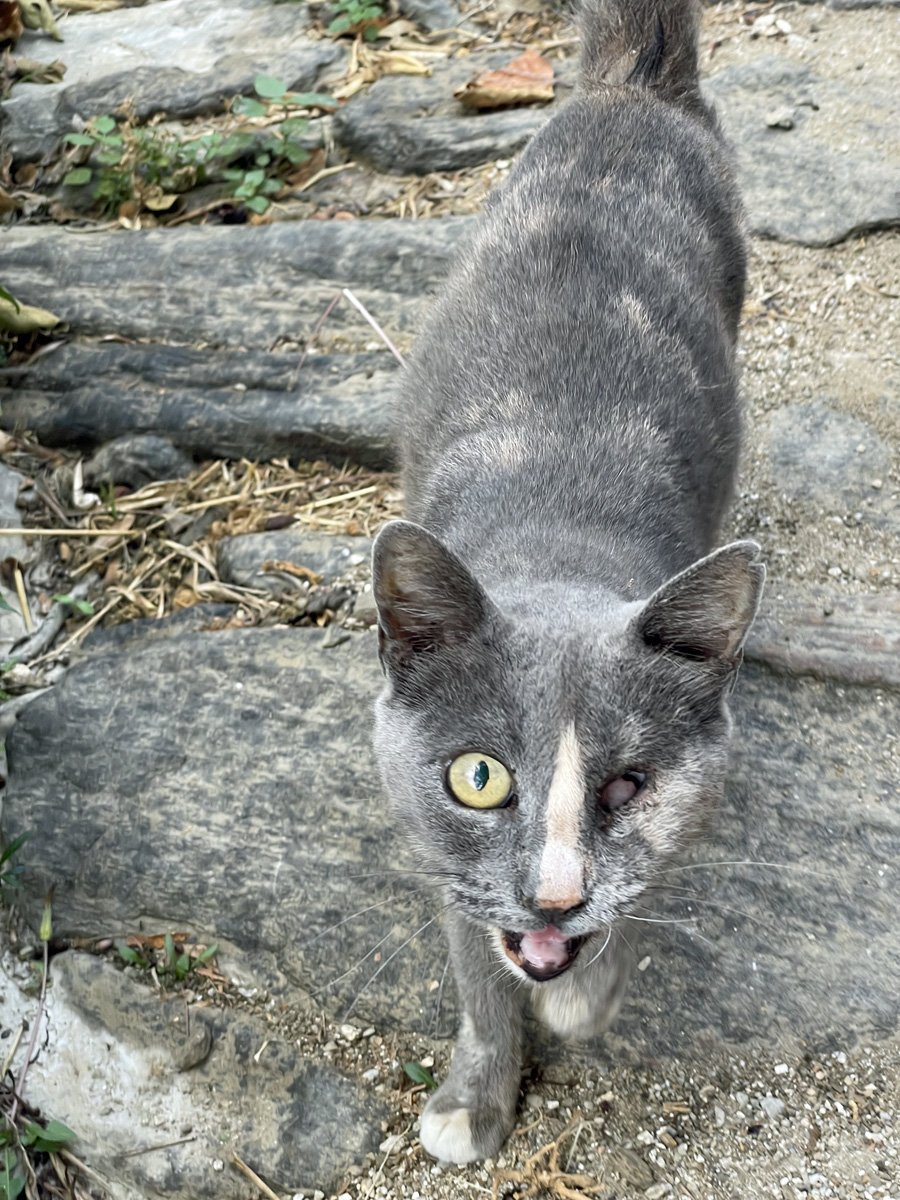Demeter
I packed just one book before boarding my plane to Athens: The Plague by Albert Camus. I bought this book during the early weeks of the 2020 coronavirus pandemic, but until now, I hadn't found the peace of mind to read it. I had read The Plague in the 1990s but had forgotten much of it. Ironically, in the week leading up to my journey, I had fallen ill with a virus—perhaps COVID-19 or possibly influenza. I felt extremely tired and had lost my sense of smell. Of all the food I ate and photographed, I could only sense texture and the basic tastes of salt and bitterness. It was a Greek tragedy.
Early in the morning, I boarded a ferry in the port city of Piraeus. It felt like walking into the belly of a great whale, surrounded by thick clouds of diesel fumes—a fitting start to my odyssey.
Upon arriving in Naxos, the world shifted from dark to light. I rented an electric fat bike to reach my "Villa," located roughly 14 kilometers from the Chóra, also known as Naxos or Naxos Town. The owner of the villa texted me directions: “Turn right at the olive tree.” However, since I was coming from the opposite direction, it was actually a left turn. I had five full days to explore Naxos.
The day before my flight, I hadn't booked anything yet, so my choice of a villa in Kastraki was made quite randomly. Kastraki is a cluster of houses located 14 kilometers from the port; it’s so small that it hardly qualifies as a hamlet. I was pleasantly surprised by the property: a bedroom with a double bed in the basement, a living room and kitchen on the ground level, another double bed on the first floor, and a private swimming pool. It felt like an abundance of luxury for just one person.
On my first day, there wasn't much time to explore. I was too tired anyway, so I lingered in the swimming pool, watching the shadows of the waving reeds dance on the white wall.
Paradise Tavern Kastraki
Despite lacking both smell and taste, I decided to pretend otherwise. I walked to a beach tavern aptly named Paradise, just a ten-minute walk away, and ordered a glass of ouzo, a Greek salad, boiled vegetables, and grilled sardines.
Greek restaurant owners in Germany have a habit of serving a glass of undiluted ouzo after dinner in a shot glass. Ouzo is an apéritif and should be diluted with two parts water and sipped slowly.
Cedar Forest of Alyko / Κεδροδάσος Αλυκού
The next day, I did some light exploring in the morning. I started cycling south until I spotted a cedar tree forest on Google Maps. To my surprise, the cedar trees turned out to be comically small; I towered over even the largest ones.
A bit further south, Pyrgaki Beach was completely deserted despite the near 30-degree Celsius temperatures and a clear blue sky.
In the afternoon, I cycled to the Temple of Demeter in Sangrí, only to discover it was closed on Tuesdays. Perhaps, like the God from the book of Genesis who rested on the seventh day, Demeter takes a break on Tuesdays.
Paradise Tavern
I maintained the same dinner ritual as the evening before. At 7 PM, just after sunset at 6:50 PM, I sat at the same table and ordered my meal as if I still had my sense of smell and taste. I chose the taramasalata, which was thankfully not pink, along with stuffed bell pepper and eggplant. Naturally, a glass of ouzo and a glass of red wine accompanied the meal. The texture of the stuffed bell pepper and eggplant was perfect, and the taramasalata also seemed very good.
In restaurants, taramasalata is often bright pink, typically colored with beet juice or another food coloring. However, the color should be beige. It is simply emulsified fish roe mixed with olive oil, lemon juice, and soaked bread or potatoes.
I had planned to recreate everything I ate on Naxos in Amsterdam. However, I soon realized that many Greek dishes are oven-based, which is unfortunate since my oven in Amsterdam is not functioning, and I’m not sure if it can be repaired.
After dinner, I pointed my iPhone at the moon to observe the starry sky. The bright sparkle just above the horizon turned out to be Venus, and I was staring right at the constellation Ophiuchus. The 2nd-century astronomer Ptolemy had already cataloged this constellation. Ancient sailors navigated the Aegean Sea by looking at the stars; they must have gazed upon the same constellation.
The Temple of Demeter at Sangrí
The next day, I made sure to arrive at the temple site when it opened. What you see there is not the ruins of the original temple; a Byzantine basilica was built on the site around 600 AD. This basilica fell into ruins during the Middle Ages. In 1949, the remains of a temple were discovered, and excavations began in 1976 and continued until 1995. In the mid-1990s, the original temple, built around 530-520 BC, was partially restored.
A good side view of the partially restored temple.
Remains of the temple and basilica before reconstruction (1988). Attribution: Mark Landon.
The oldest remains of cult activity are protected by glass plates and date back to a time before the construction of the marble temple. It is not definitively proven that the temple was dedicated to Demeter; no inscriptions were found, and this is inferred only by its location in a rural area far from any larger settlement.
Below, the fertile fields stretch all the way to the coast, making it easy to see why this site could have been chosen for a temple dedicated to a goddess of harvest and agriculture. Further reading: The Temple of Demeter.
Hike to Chalkio
One of the main reasons for coming to Naxos was to explore the hiking trails. I started my first walk at 11 AM, planning to cover the 6.5 kilometers to Chalkio, also known as Chalki or Halki. Normally, I wouldn’t think twice about this distance. However, upon arriving in Chalkio, I realized I would need to walk back to retrieve my electric fat bike to return to my villa. Three hours of walking was all the energy I had for that day.
The hiking paths mostly wind through agricultural fields, separated by rock fences. Most fields are dotted with old olive trees, sheep, or both. Without the sense of smell, the landscape felt flat, like walking through a painting.
The first time I traveled to Greece, Freddo Espresso didn’t exist; it was first created in Athens in 1991, made by mixing two shots of espresso with ice in a frapièra and pouring it over ice. I ordered a Freddo Espresso without sugar—bitter like the night. That I did taste.
In Chalkio, I discovered a small restaurant called Tradizionale Caffè Ristorante Galanis. They had a handwritten menu that changes daily. I ordered Briam, a slow oven-baked vegetable dish for just 7 euros.
Απόγευμα
For the third time, I sat down at the same table exactly at 7 PM, ten minutes after sunset. I ordered tzatziki and lemon goat with Naxos potatoes, but they didn’t have goat and instead offered the same dish with pork. For good measure I also ordered a glass of ouzo and a glass of red wine.
Tzatziki is made from strained yogurt, which should be very thick, mixed with cucumber, garlic, salt, olive oil, and a touch of vinegar.
“ Don’t tell me what you ate. Tell me who you ate with.”
Lemon Pork and Naxos potatoes.
Next chapter: Dionysus

































































